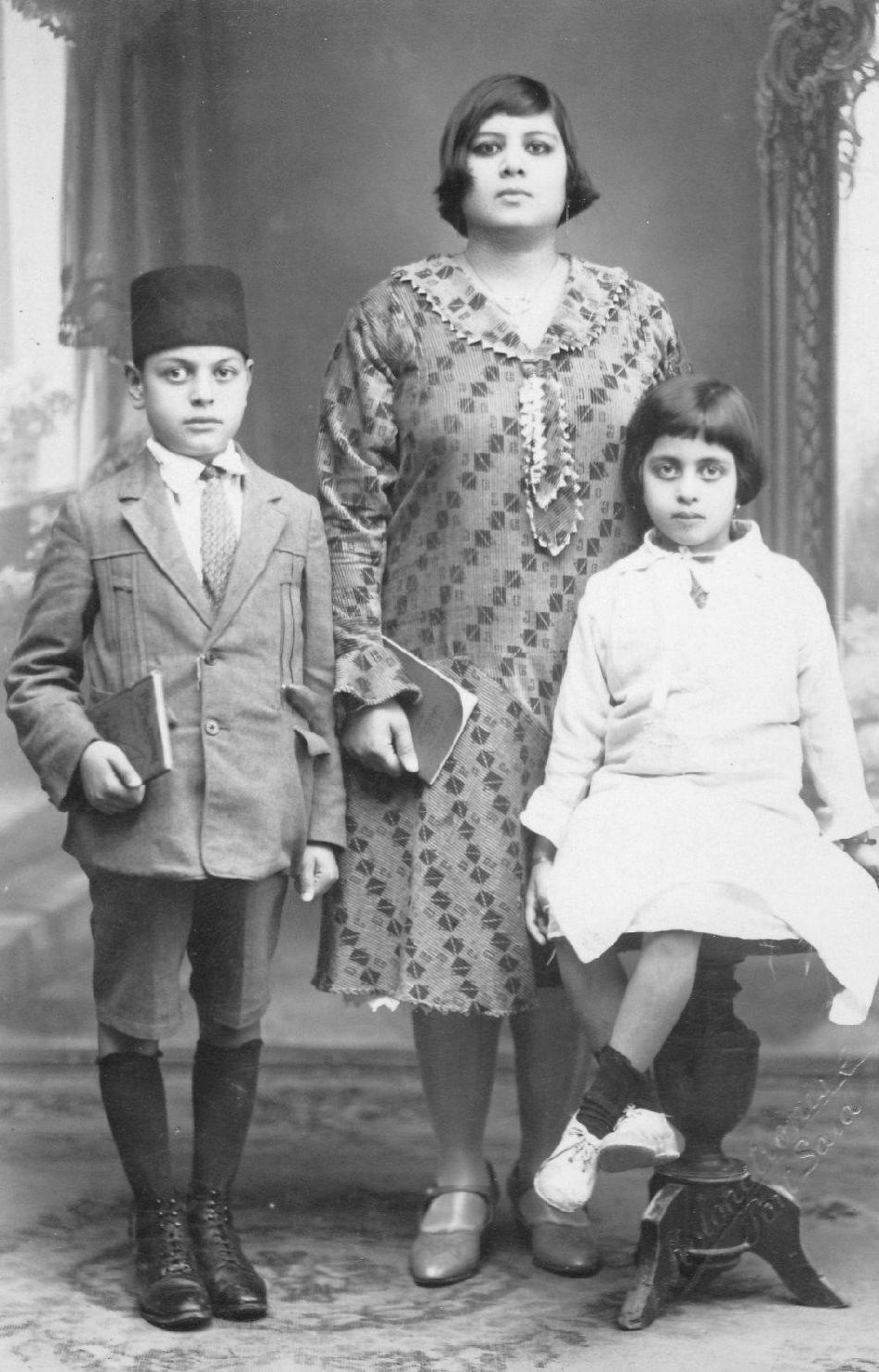
Egyptian Boys Garments: Western Clothing

Figure 1.-- Here we see three unidentified siblings outfitted in Western dress, we think about 1930. The fez is not Western, but it is also not traditional. It was introduced by the Ottomans as a moderizing step (1829). The children here look to be about 6-16 years old. The girls are going to school (notice the note books) which was a major change in Arab society. They wear dresses that would have mnot been out of plaac in Europe or America. The boys wars a suit with some Norfolk styling as well as a tie. The suit has longish short pants,a style still common in Europe at the time, along with knee socks and high top shoes. Unkile Europe and America, the Egyptian photographic record is not a good reporesentation of prevalent styles. The bulk of the population lived in rural areas and were dirt poor--no money for photohraphic portraits. The studio was N. Kolokotronise in Port Said, an especially Westernized city at the entrance to the Suez Canal..
|
|
Traditional dress was still worn in Egypt at the beginning of the 19th centuty. Egypt had beena Ottoman province for four centuries, but under Mohammed Ali began to exert itys independence. We have no details as to what this meant in the fashion world. With the construction of the centuries of the Suez Canal, Western dress began to make inroads, at least amomg the urban upper amd middle-class urban population (1860s). This escalated when Britain created a Pryectorate (1882). While Western dress behan to make inroads in the city, the great mass of the population eore traditional clothing, especially in rural areas. And the great bulk of the population lived ijn rural areas. Traditional clotjhing continued to doiminate Egypt in the early-20th century, but Western dress was worn in yhe cities. This was favilitated by the opening of schools based on modern, largely Western curriclum. Until after World War II, traditional clothes were almost universally worn in rural areas. We see Western dress being more commonly worn in the cities and the mniddlke class. Western clothes have gradually become more common, even with the lower-classess. Today we see many children wearing Western clothing, even in rural areas. This is especially the case for younger boys. Men as well as girls and women are more likely to wear traditioinal clothing. Social class is anotherr fsactor. The well-to-do are more likely than the working-class to wear Western clothing. Our information, however, is still very limited. We hope that Egyptian readers will help provide some information on Egyptian clothing styles.
HBC

HBC Chronolgy Pages in the Boys' Historical Web Site:
[The 1880s]
[The 1890s]
[The 1900s]
[The 1910s]
[The 1920s]
[The 1930s]
[The 1940s]
[The 1930s]
[The 1940s]
[The 1950s]
[The 1960s]
[The 1970s]
[The 1980s]
Related Style Pages in the Boys' Historical Web Site
[Smocks]
[Long pants suits]
[Knicker suits]
[Short pants suits]
[Socks]
[Eton suits]
[Jacket and trousers]
[Blazer]
[School sandals]
[School smocks]
[Sailor suits]
[Pinafores]
[Long stockings]
Navigate the Boys' Historical Clothing Web Page
[Return to the Main Egyptian garment page]
[Return to the Main Egyptian page]
[Introduction]
[Activities]
[Biographies]
[Chronology]
[Clothing styles]
[Countries]
[Bibliographies]
[Contributions]
[FAQs]
[Glossaries]
[Images]
[Registration]
[Tools]
[Boys' Clothing Home]
Created: 5:26 AM 6/11/2019
Last updated: 5:26 AM 6/11/2019



